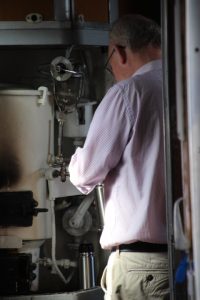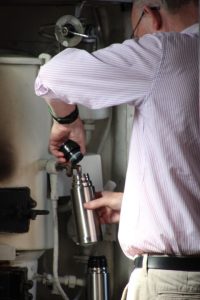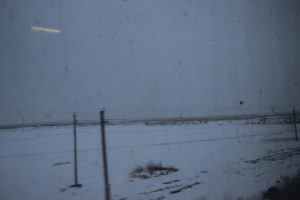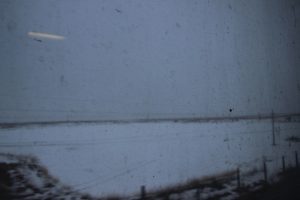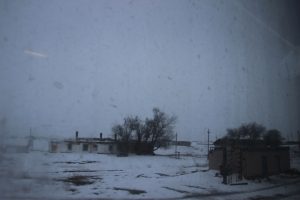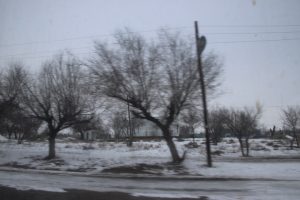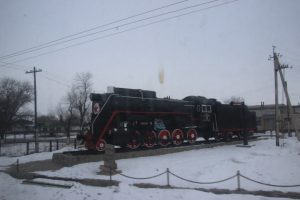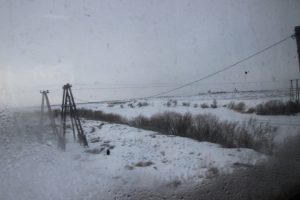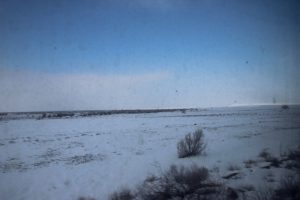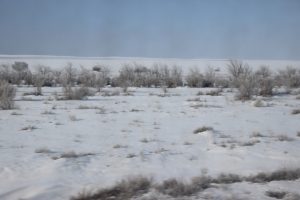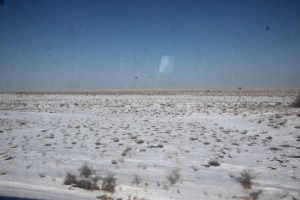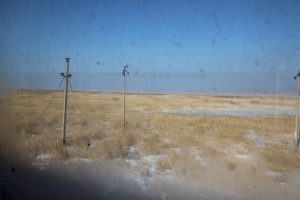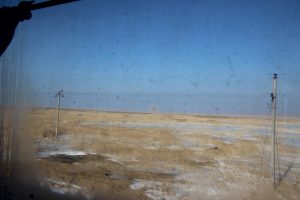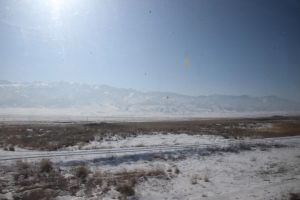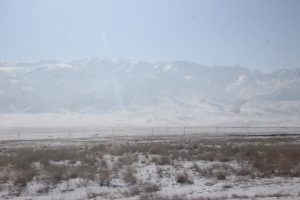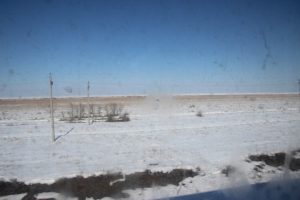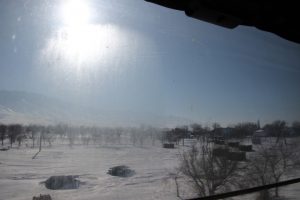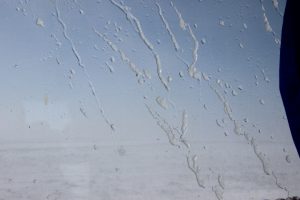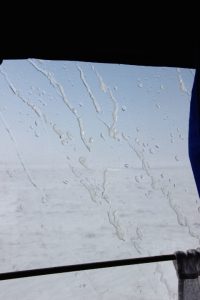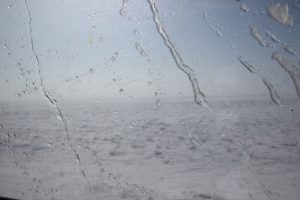It was another crisp and snow covered night when our train left Almaty. We had been able to board more than an hour before departure and, as other long distance trains left before ours, the waiting room was virtually deserted. We realised why when our empty carriages were brought into the station. There were only 4 of them! We were in carriage number 1 and were joined by 8 other people.
Leaving on time we were soon asleep and therefore did not see the start of the journey across the Steppe, passing Kapchagay Lake. This is fed by the Ili River and its tributaries which flow from the Tien Shan Mountains having previously provided water to Lake Balkhash, which we hope to see later in the day as it is nearer China. The Ili River is this region’s equivalent to the Amu-Darya that we have seen earlier, as settlements use the river water with irrigation schemes. Rice is the main crop.
We were awake around 8:00 a.m. to witness the Steppe covered in deep snow which stretched to the horizon.
We stopped at a small station called Matay which had a house-sized terminal building and a preserved steam locomotive. When one of the party stepped off the train the bitter cold wind, descending from the mountains, was an initial shock as the train is so warm.
By midday we were approaching Lake Balkhash. It is fed by the Lepsy River and others which makes the lake about 603km long. However, despite its size, at this time of year it is frozen and snow-covered so it is very difficult to identify it.
It was only a few hours later that we saw some areas of water because its eastern end is salty and therefore is not quite as frozen.
The lake varies between 24km and 89km in width as a result of varying amounts of rainfall. It seems that the lake was once completely saline and covered the areas, in particular that to the east, which is now a high altitude cold desert. Geologists believe that the saline lake reached to the Dzungarian Gate, a gap through The Tien Shan Mountains, and linked up with lakes on the Chinese side of the range. The geologists called this vast sea the Turfan Depression. The mountains (in English ‘Heavenly Mountains’) stretch some 3000km and have a width of 480km and cover an area that is about six times the size of the UK! Our train skirts around the southern side of the range, but the line twists and turns so much that one could see them from both sides of the carriage. The sky was clear as we began our journey past the highest peaks (7322m). They rose suddenly from the snow covered desert which had an amazingly glossy and metallic-like reflective surface which was the product of long periods of scouring by the mountain winds. In the bright sunlight the whole area just shone. There were snowfields and glaciers broken by jagged but still snow covered peaks. It was amazing to see glaciers ending in an, allbeit snow-covered, desert.
At times the train had to battle through head-on strong winds which were blowing the snow and making it impossible to see anything. The snow stuck to the windows and because of the wind chill froze in twisted lines and clumps.
An elderly local man was spellbound as we passed through this desolation and was fascinated by us taking photographs. Although he had no English he was clearly telling us and his grandson, standing next to him, about this natural landscape. He even came to our compartment and said in Kazak the equivalent of, ‘you have got to see this’! So we rushed out with cameras at the ready. He and his family left at the frontier post but did say ‘goodbye’. Brilliant!!
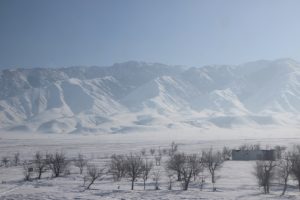
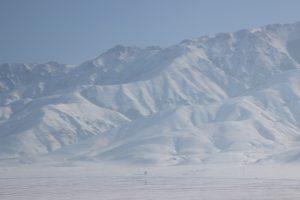
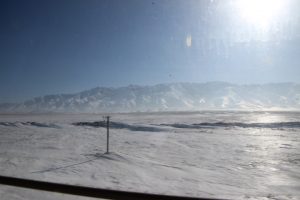
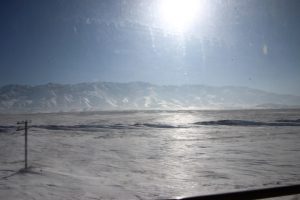
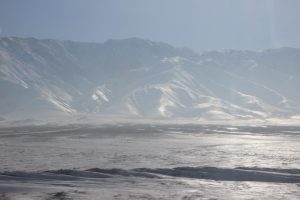
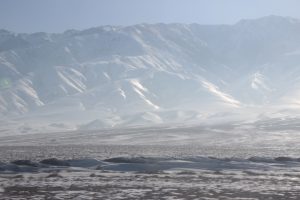
At the Dzungarian Gate and the small town of Druzhba we started at 16:35 the process of Kazak customs, immigration and carriage bogey changes. We were hoping to stay onboard to witness the bogey change but, as there was no restaurant car on the train, we were invited to take a meal in the railway station whilst the carriages were taken away to have the bogies for China fitted. Chinese railways use standard gauge but the countries we have crossed use metre gauge. Before 6:30 p.m. we were back on the train. Passports were collected and then the carriage was virtually taken apart. By 11:00 p.m. we were given clearance to proceed the 12km to Alashenko on the Chinese border where the same process was conducted. We had our passports returned but the train had not moved before we were asleep, 6 1/2 hours after this part of our adventure began. An additional challenge was moving our clocks 2 hours forward as China is 8 hours ahead of GMT.
